Wollerton Old Hall
Writer: James Augustus Baggett
Photographer: Duane Tinkey
Roses may be America’s favorite flower, but growing them smack-dab in the middle of Iowa can be daunting. Japanese beetles desiccate the leaves. Foraging deer nip off the buds before they have a chance to flower. Black spots appear and spread until the whole shrub is defoliated. Reliable bloomers can suddenly, mysteriously, just keel over and die.
So if you’ve always longed for the romance of roses in your garden, you’d be wise to do a little preliminary research. To give you a head start, we talked to a couple of local experts who offered some seasoned advice and encouragement.
Get in the zone: Central Iowa is in Zone 5 of the hardiness map published by the U.S. Department of Agriculture, so it’s important to choose cold-hardy, disease-resistant roses that can thrive in this climate and then plant them where they get at least six hours of sun, said Julie Hempel, the parks superintendent for the city of Des Moines.
Replenish the soil: “My best tip for growing roses in Des Moines is to take care of what’s under them,” said Leslie Hunter, the horticulture manager at the Greater Des Moines Botanical Garden. She recommends adding an inch or two of compost around the plant every year to promote the growth of roots and beneficial microbes. Hempel recommends applying a granular fertilizer three times a year: in early spring as the leaves expand, in early summer after the first flush of blooms, and once more no later than early August.
Water well: “All the concrete and hard surfaces in Des Moines make it warmer and seem to create a mini high-pressure dome. Rain clouds that head our way seem to go either north or south of the city because of these little forcefields,” Hunter said. “Roses are tough plants, but they do require regular, deep watering.” She recommends weekly watering with a hose or with drip irrigation that delivers moisture to the roots without getting the leaves wet, which can spread disease. But don’t get carried away: Roses don’t like overly wet soil, so it’s important to make sure the site is well drained.
Prune properly: The best time to prune roses here in Des Moines is in March or April. “Look for the three Ds: dead, diseased and damaged canes,” Hunter said. “Roses should have a vase shape, open in the middle for air circulation and pruned from the inside out so the buds face outward.”
Frustrate the critters: “Rabbits are my nemesis,” Hunter said. Use chicken-wire fencing to keep them from snacking on tender young shrubs. To fend off deer, Hempel suggests installing netting or fences and rotating repellants “so the deer don’t get too used to it.”
Prep for winter: Without a lot of snow, roses can dry out from the wind. Hunter recommends mounding a half bucket of compost around each plant to insulate its roots and let the nutrients work into the soil over the winter.
Stop and smell the roses: “People say they don’t think they could grow roses here because they require so much work,” Hunter said. “It all has to do with your perspective. I don’t expect roses to look perfect all the time, so I tolerate the occasional bug or black spot. Plants should bring you joy — sometimes a little frustration — but mostly joy.”
10 Roses to Plant in Des Moines
Julie Hempel singled out five of her favorites from the Clare and Miles Mills Rose Garden:
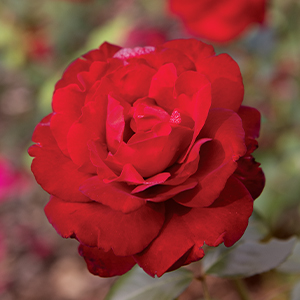
Black Cherry (above)
“Here’s a double red floribunda rose that produces large clusters of flowers, which work well in bouquets. It handles the colder winters and is heat tolerant and disease resistant.” 3 to 4 feet tall and 3 to 4 feet wide.
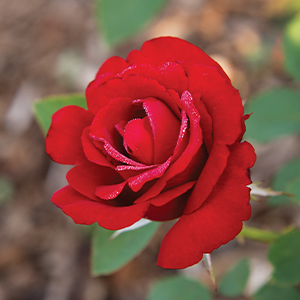
Opening Night (above)
“This award-winning red hybrid tea rose has a slight fragrance. It does have thorns but will attract bees and butterflies to the garden.” 4 feet tall and 3 feet wide.
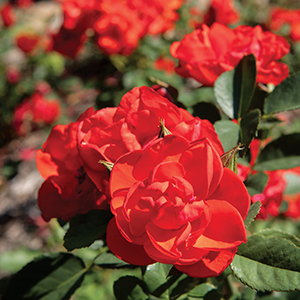
Orange Sensation (above)
“This David Austin rose is an orange-red floribunda rose that is harder to find. It has a sweet fragrance and is slightly smaller in size.” 3 to 4 feet tall and 2 to 3 feet wide.
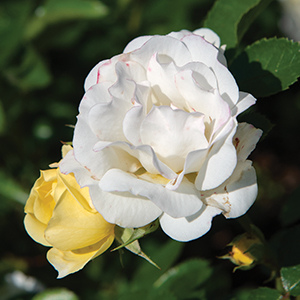
Popcorn Drift (above)
“A creamy white to yellow compact rose, this is a newer variety in our garden. It’s great for a border planting and will rebloom all summer. It overwinters well and resists disease.” 1 1/2 feet tall and 2 feet wide.
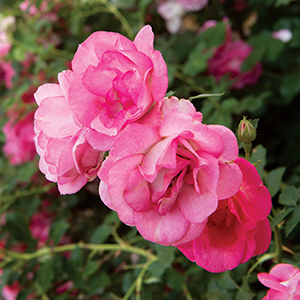
Sunrise Sunset (above)
“A pink-apricot Easy Elegance shrub rose, this is a great rose that’s ever-blooming and disease resistant.” 3 to 6 feet tall and 4 to 7 feet wide.
Leslie Hunter identified a few of her favorites at the the Greater Des Moines Botanical Garden:
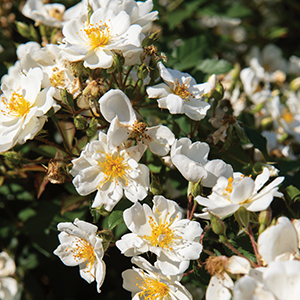
Darlow’s Enigma (above)
“This rambler rose is a medium shrub covered in clusters of white blooms that smell heavenly. It’s a great rose to pair with perennial companions.” 10 to 11 feet tall and 10 feet wide.
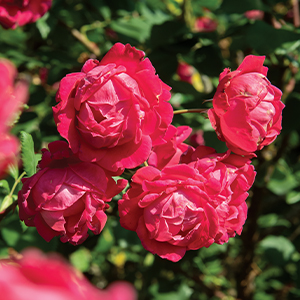
Emily Carr (above)
“I’m not usually a fan of red roses, but this is an amazing shrub. Ours reaches 7 to 8 feet tall with cascading branches dripping with lovely dark red blooms.” 4 to 6 feet tall and 3 to 4 feet wide.
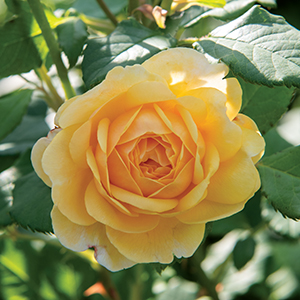
Poet’s Wife (above)
“These flowers start as a buttery yellow that fades to a shade of lemon. They make a perfect cup shape that the bees can’t get enough of.” 4 feet tall and 4 feet wide.
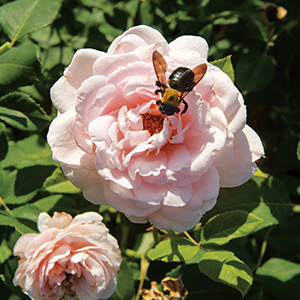
Quietness (above)
“Released in 2003, this shrub rose has beautiful pale soft pink flowers on clean foliage. It was bred at Iowa State by Griffith Buck, whose wife, Mary, found the unnamed seedling in their home garden where she would go to find peace and solace after 9/11.” 3 to 4 feet tall and 3 feet wide.
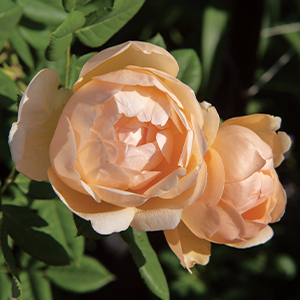
Wollerton Old Hall (above) “A relatively new addition to the rose garden, this climbing rose should be planted near a structure for support.Its gorgeous and very fragrant apricot blooms are constantly blooming.” 8 to 12 feet tall and 3 to 4 feet wide.
And Four More — With Iowa Roots
Amelia Earhart
Named in honor of the legendary aviator who spent some of her early years in Des Moines, this hybrid tea rose was bred in France by Louis Reymond and introduced in 1932 in the United States by Jackson & Perkins Co. Its fragrant blossoms are golden-yellow with deep yellow centers and orange-pink shading. 5 feet tall and 4 feet wide.
President Herbert Hoover
Bred by Lyman B. Coddington and introduced in 1930 as “President Hoover,” this climbing hybrid tea rose produces richly fragrant blooms with a blend of gold and orange and a touch of pink. 10 to 15 feet tall and 3 to 4 feet wide.
Iowa Belle
Bred by Griffith Buck at Iowa State University in 1962, this fragrant hybrid tea rose boasts large blooms with red-edged white petals. It’s winter hardy without protection. 4 feet tall and 3 feet wide.
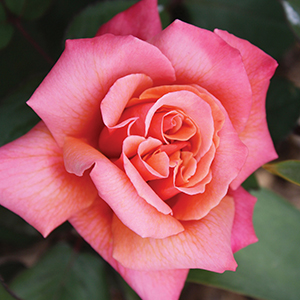
Simon Estes (above) Photo: Leslie Hunter/Greater Des Moines Botanical Garden
Named after the famous opera singer from Centerville, this rose was also bred by Buck at Iowa State, in 1984, and introduced by Roses Unlimited in 2006. It produces large, full pink blossoms with a mild fragrance. 3 to 4 feet tall and 4 feet wide.











